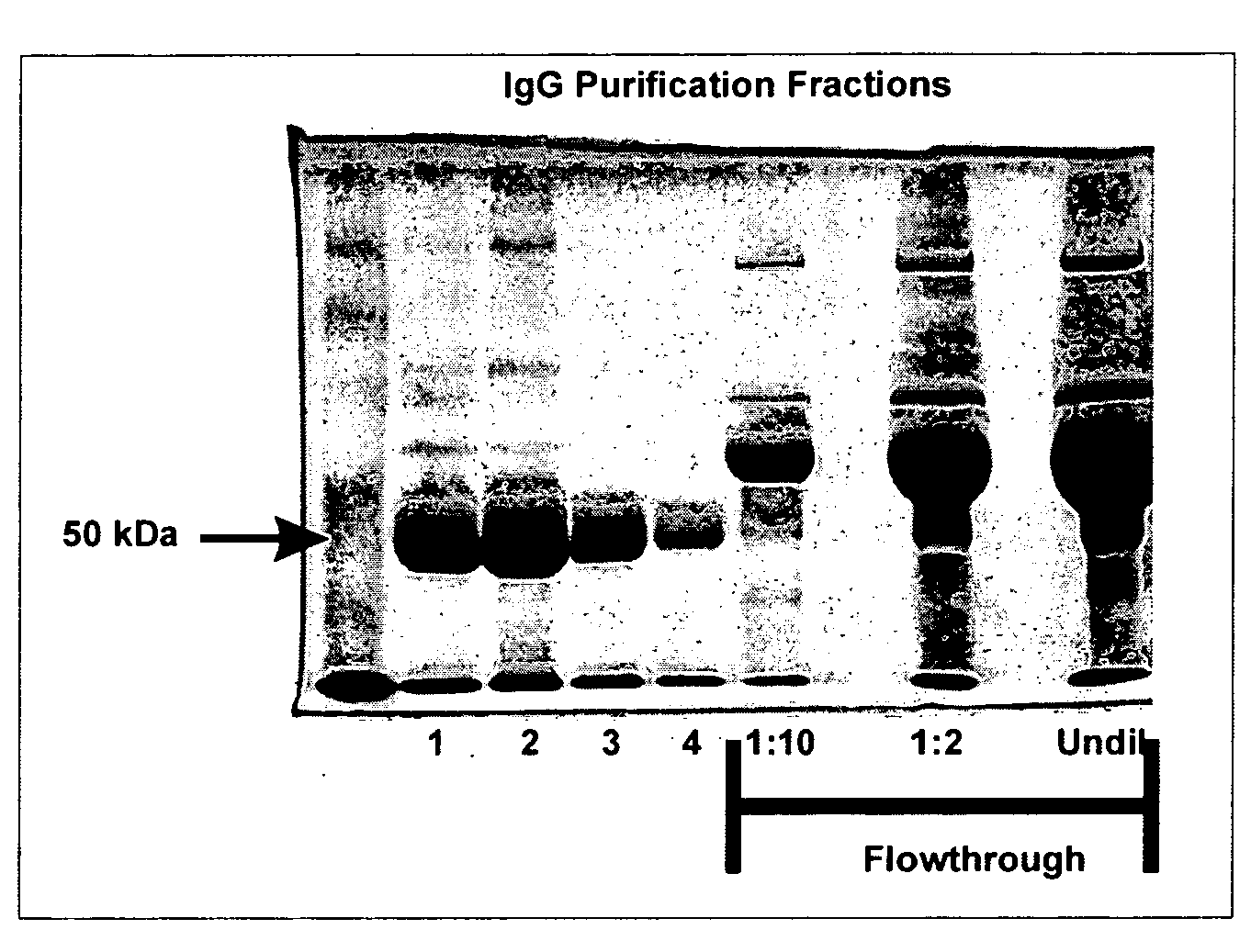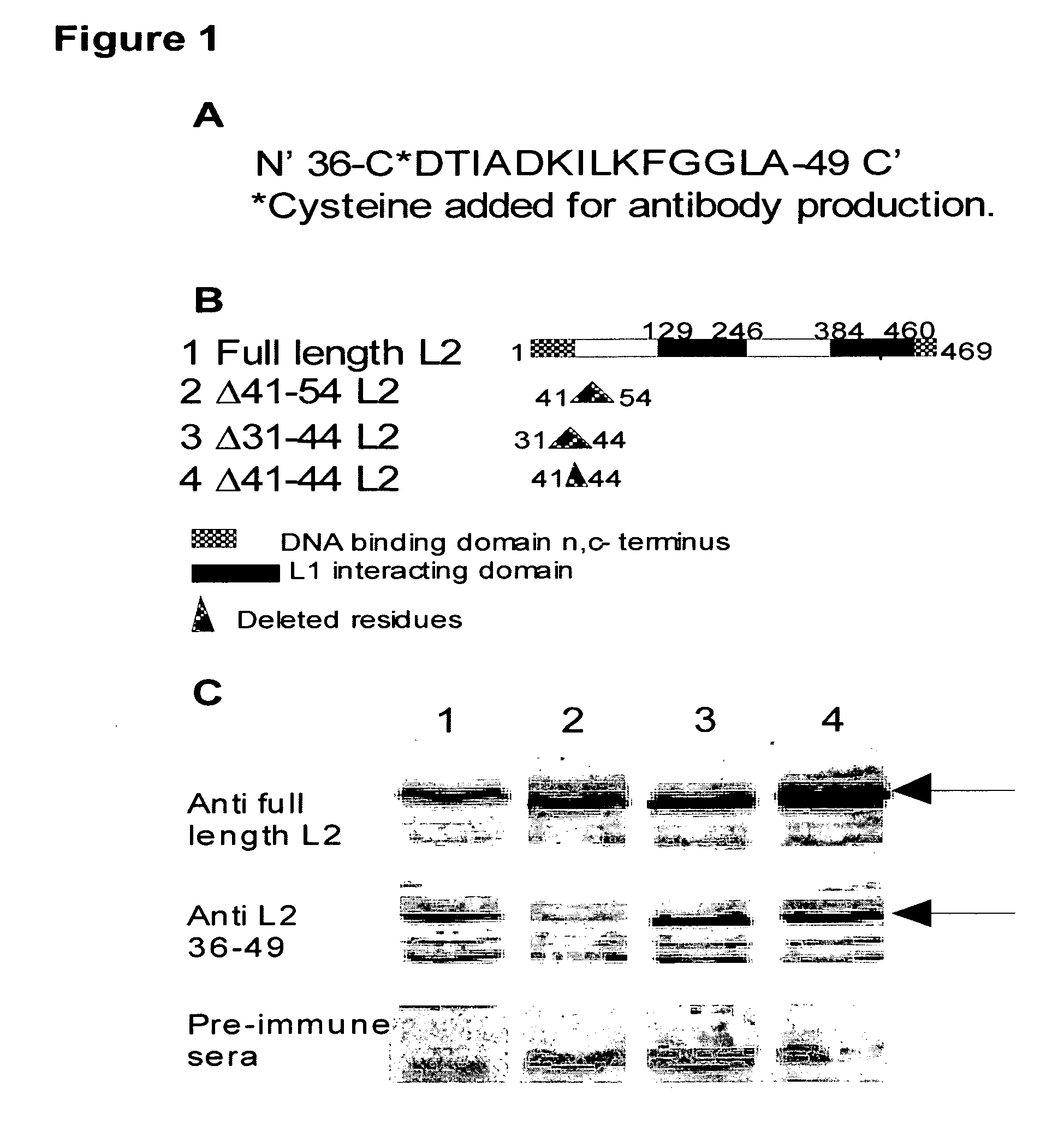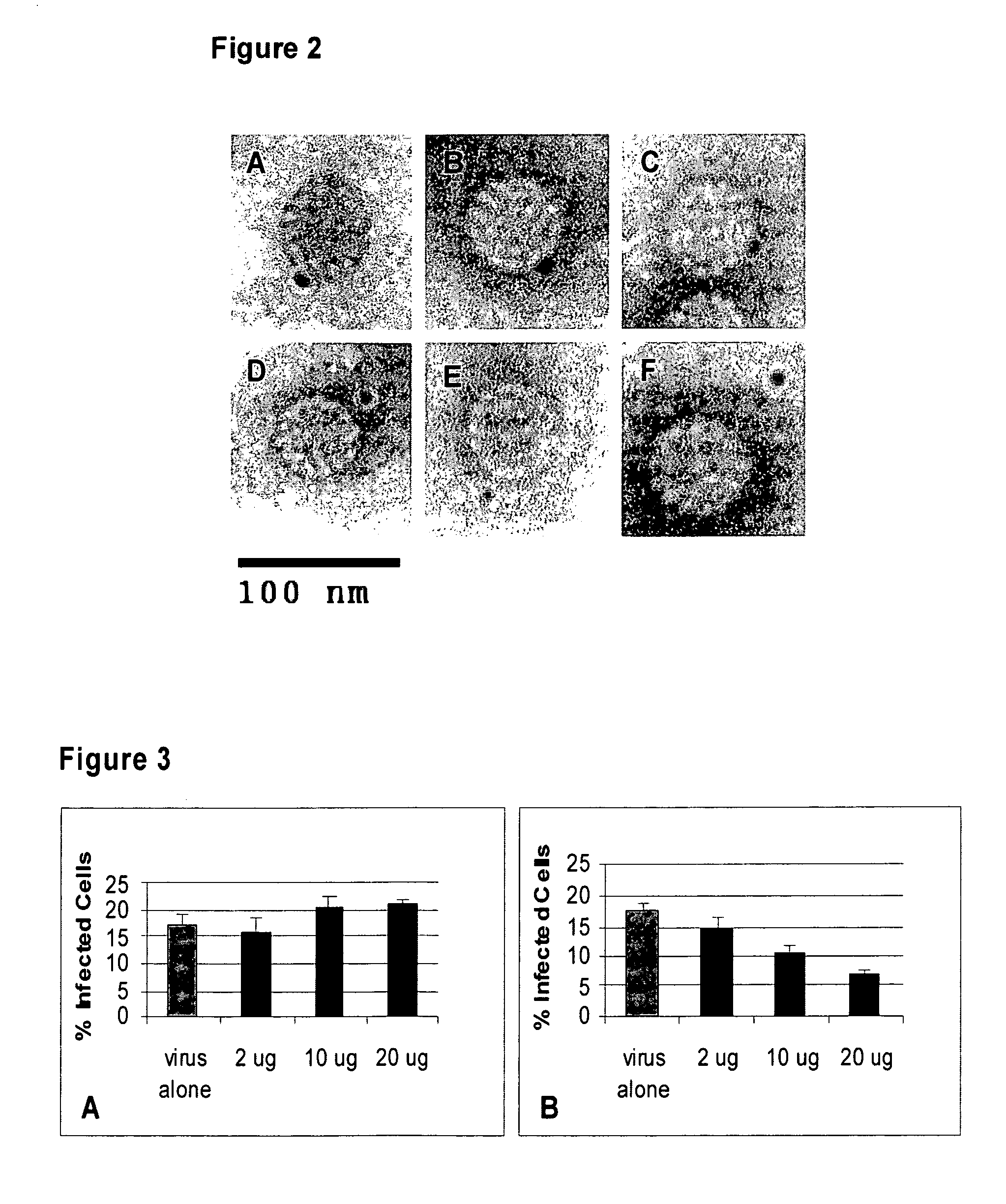Antibody inhibiting infection of papillomavirus
a technology of papillomavirus and anti-infectious antibodies, which is applied in the direction of antibody medical ingredients, dsdna viruses, peptide sources, etc., can solve the problems of loss of infection, ineffective use in underdeveloped countries, and inefficient packaging of dna, so as to inhibit the infection of mammalian cells
- Summary
- Abstract
- Description
- Claims
- Application Information
AI Technical Summary
Benefits of technology
Problems solved by technology
Method used
Image
Examples
example 1
L2 Peptides and Antibodies
[0048]The following peptides were made by ADI (Dallas, Tex.): 1) WTP15L2-CDTIADKILKFGGLA corresponding to residues 36-49 of BPV-1 L2 (SEQ ID NO:1) with a cysteine moiety at the N-terminal, and 2) SCR15L2CIDGLGKLATIDAKF (SEQ ID NO:2) corresponding to the same BPV-1 L2 residues, with the cysteine moiety at the N-terminal, in random order. The peptides were resuspended in serum-free DMEM as per manufacturer's instruction at 10 mM concentration. The proper amount of peptide from stock was added to the cultures to attain the final concentrations in the neutralization blocking experiments. Antibodies to the L2 residues 36-49 were made by ADI after conjugation of the 36-49 amino acids peptide to keyhole-limpet hemocyanine (KLH). Two rabbits were immunized and bleeds were collected at 4 week intervals. Pre-immune serum was collected from both rabbits.
[0049]Antibodies were generated in the two rabbits using the peptide corresponding to BPV-1 L2 residues 36-49 conjug...
example 2
Pseudovirion Production and Purification
[0050]The bicistronic plasmid pShell carrying the BPV-1 L1 and L2 sequences, the GFP cDNA containing plasmid 8fwb, and the 293TT viral packaging cell line were a generous gift from Drs. Day and Schiller (6). Pseudovirus production was performed as described (6). In brief: 293TT cells at 70-80% confluence in a T175 cm2 flask were co-transfected with 15 ug of pShell and 15 ug of 8fwb, in 65 ul of lipofectamine 2000 (Invitrogen, Carlsbad, Calif.) as per manufacturer's instructions. After 24 hours, the cells were trypsinized and split into two new T175 cm2 flasks. After 24 hours, the cells were harvested by centrifugation and re-suspended in 500 ul of cell lysis buffer (Brij, benzonase, DNAsafe, in PBS) and incubated at 37° C. with gentle rotation for 16 hours. The virus preparation was put on ice for 5 minutes before the addition of 85 ul of 5M NaCl. After a 20 minute incubation on ice with inversion every 5-10 minutes, the preparations were spun...
example 3
Determining Viral Titer
[0051]Viral titer was performed on Cos-7 cells. In brief, 50,000 Cos-7 cells / well were plated on a 24 well plate for 24 hours. At 24 hours, cells were washed in cold media (DME-10% FBS) and incubated on ice for 10 minutes in cold media. After 10 minutes cold media was added with 2, 5, or 8 ul of virus to the wells and the plate was incubated on ice for 2 hours. After two hours, the cells were washed ×3 in DME-10% FBS at room temperature, and incubated at 37° C. in 500 ul DME-10% FBS for 48 hours. Cells were then harvested and analyzed for GFP fluorescence by FACS analysis. 10,000 cells were counted and the percentage of green cells was used to determine the titer per ml of virus. Real time-PCR was performed on the DNA extracted from the virus preparation as described previously using GFP primers (6). The number of viral particles needed to obtain one infectious viral particle, i.e., a green cell, was determined by dividing the total number of viral particles o...
PUM
| Property | Measurement | Unit |
|---|---|---|
| diameter | aaaaa | aaaaa |
| diameter | aaaaa | aaaaa |
| diameter | aaaaa | aaaaa |
Abstract
Description
Claims
Application Information
 Login to View More
Login to View More - R&D
- Intellectual Property
- Life Sciences
- Materials
- Tech Scout
- Unparalleled Data Quality
- Higher Quality Content
- 60% Fewer Hallucinations
Browse by: Latest US Patents, China's latest patents, Technical Efficacy Thesaurus, Application Domain, Technology Topic, Popular Technical Reports.
© 2025 PatSnap. All rights reserved.Legal|Privacy policy|Modern Slavery Act Transparency Statement|Sitemap|About US| Contact US: help@patsnap.com



